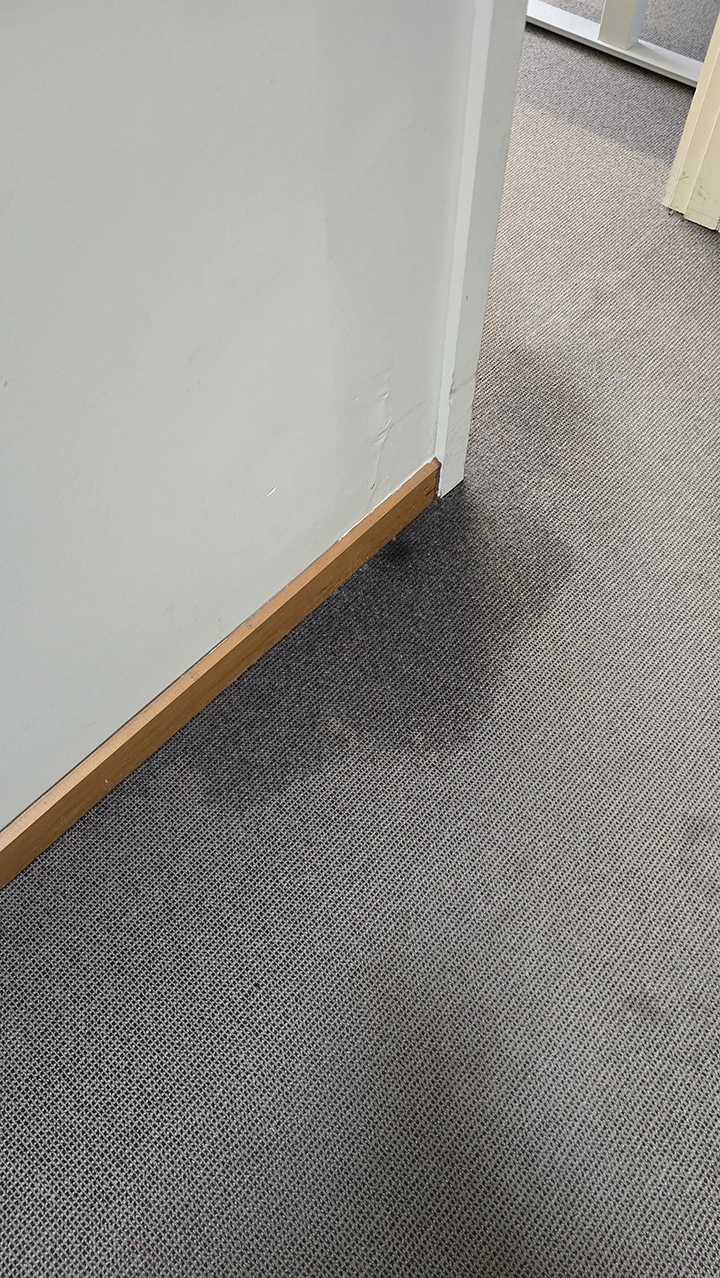Repairs to South Wairarapa Council’s toxic mould and leak-plagued Kitchener St main office block will begin this month, which will see only part of the building still operating and staff relocated to other sites and to home offices.
The Martinborough offices – touted as New Zealand’s first Heritage quake-proof building – have toxic black mould both airborne and under foot, asbestos lining in some areas, a leaky roof and even at least one toilet and electrical conduits which currently leak water.
When the issues became public last September, officials recommended either major band-aid repairs, a wider refurbishment or a new building.
Councillors have opted for the lowest-cost option which councillor Colin Olds described last week as “the most affordable and practical option to ensure the safety of our people and public, and the longevity of the building.”
Olds said the works will deal with the outstanding health and safety and security issues which impact the continued viability of the site by: repairing and relining walls, fixing leaks, and refitting the kitchen and toilet facilities; providing more secure access to the offices from the reception area.
During the refurbishment, staff will be working from part of the Kitchener St building, from the council’s Greytown office and library meeting rooms, while Martinborough library will house the council’s reception – and some staff will work from home.
Stefan Corbett, Group Manager Infrastructure and Community Operations said “we are doing everything possible to limit any disturbance to council operations and service delivery.”
Last October, The Star reported that tests have found airborne toxic black mould – Stachybotrys – in the men’s toilets and “significant fungal growth” in the Waiohine (meeting) Room ceiling, which had rendered the room unusable, and fungus which health inspectors warned “may become airborne.”
“Toxic black mould … should not occur indoors and the (human) tolerance for it is set at zero,” they noted in their report to council.
They also recorded “extremely elevated readings” of other fungi in the corporate office, and the same moulds in the corridor near the mayor’s office.
“Roof leaks have stained and damaged the walls, wallpaper and carpets … allowing more mould to flourish.”
The office suite was then designated “not fit-for-purpose, (as it) presents an existing and increasing risk to staff health and safety … and has longer-term risks to staff and services should (it) continue to deteriorate.”
A report last October, released publicly two weeks ago, noted the key issues needing urgent action included: mould throughout the building; asbestos, which had not been subject to the required survey and management plan; lack of physical separation from mould etc at reception; structural issues for the leaking building: ongoing leaks through electrical conduits: poor quality work environment; multi-sites for staff impacting service delivery.
Constrained by cost, the council apparently initially opted for a band-aid-plus refurbishment, costed last year at $130,000 a year – “and repeating” – but not the $1.0 – $1.5 million building and office “refurbishment,” including a new roof.
Staff have since offered Option 3: basic repair and refurbishment plus extending the front of the current building to provide extra accommodation needed to enable council to quit its Greytown office leased space.
They also considered “Option 5b” – a developer-led new-build in which the council leases space (with Option 1 in the interim). along with “disposal of the Kitchener St site” and its leaky building. “The maximum lease term (for Option 5b) is ten years, with an option to extend by a further ten years.” It is not yet known whether this option will prove financially viable.
No formal price-tag was attached to a new premises, but one informal estimate put it at up to $20 million.
Another consideration for the mix: officers noted “Challenge and uncertainty of the future – amalgamation might happen.” The workshop also agreed the issue was “beyond ‘do nothing’ given toxic mould and risks to staff,” and “delay in progressing a longterm solution … increases the risk to staff health and safety.”
A tender for the initial repair programme was to be issued by the start of July (2025).
(Detailed information, including Elections information, is available at swdc.govt.nz/contact-us )



